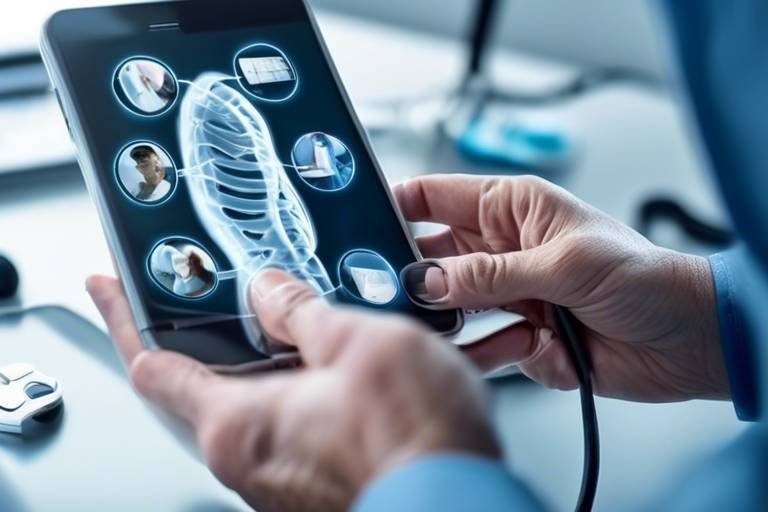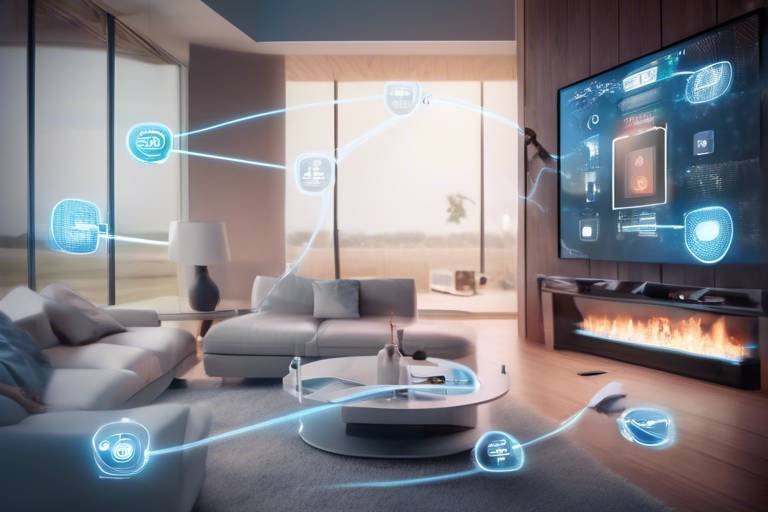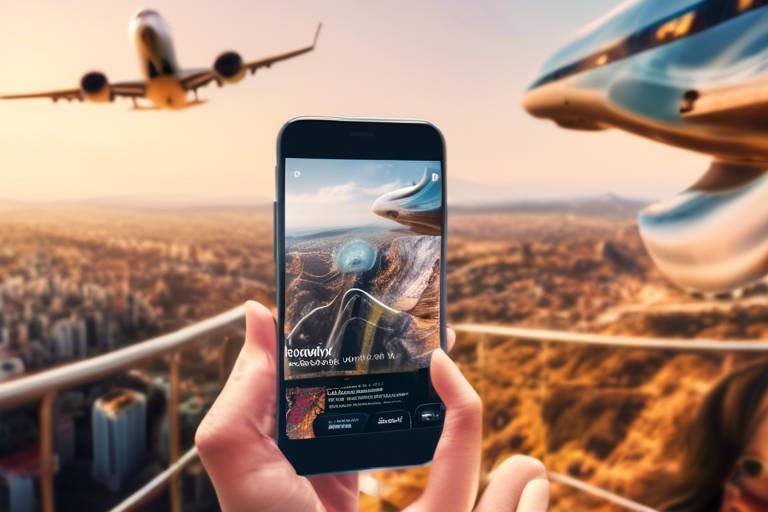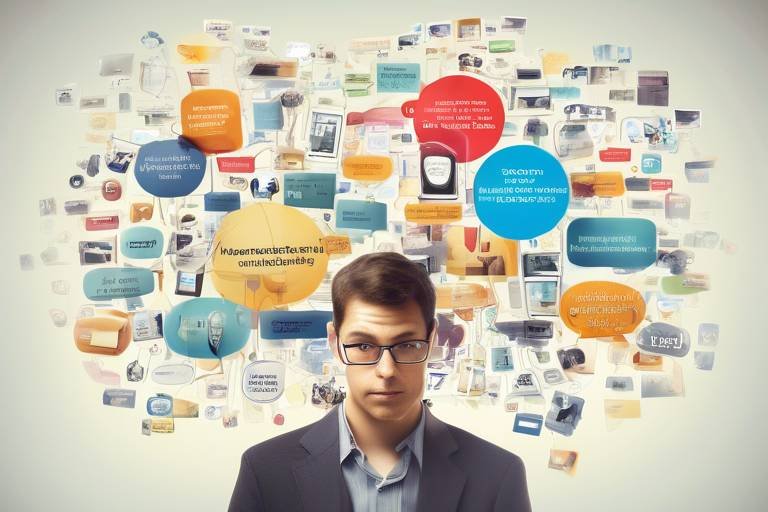How Technology is Improving Global Health Initiatives
In today's fast-paced world, the intersection of technology and healthcare has sparked a revolution that is reshaping how we approach global health initiatives. Imagine a world where medical care is just a click away, where patients can receive expert advice without leaving their homes, and where data drives decisions to improve health outcomes. This is not a distant dream; it's happening right now, thanks to the rapid advancements in technology.
From telemedicine to artificial intelligence, technology is breaking down barriers that once hindered access to quality healthcare. It’s like having a superhero on your side, swooping in to save the day when you least expect it. By leveraging these innovations, healthcare systems can reach underserved populations, enhance the quality of care, and ultimately save lives. This article will delve into the transformative role of technology in global health, highlighting how these advancements are not just enhancing healthcare delivery but also ensuring that health outcomes are equitable across various populations worldwide.
As we explore the various facets of this technological revolution, it's essential to recognize that the journey is just beginning. With each new development, we are stepping closer to a future where health disparities are minimized, and everyone has the opportunity to lead a healthier life. So, buckle up as we navigate through the exciting ways technology is reshaping global health initiatives!
Telemedicine has emerged as a vital tool, providing remote access to healthcare services and enabling patients in underserved areas to receive timely medical attention without the need for physical visits. Imagine living in a remote village where the nearest hospital is hours away. Now, picture being able to consult with a doctor via video call, receiving expert advice and prescriptions without the exhausting travel. This is the magic of telemedicine!
Furthermore, telemedicine is not just about convenience; it’s also about efficiency. Healthcare providers can manage their time better, and patients can avoid long waiting periods. The accessibility of telemedicine is particularly crucial during public health crises, such as the COVID-19 pandemic, where social distancing became essential. By utilizing telemedicine, healthcare systems can continue to operate smoothly while prioritizing the safety of both patients and providers.
Wearable technology, such as fitness trackers and smartwatches, empowers individuals to monitor their health metrics, promoting proactive health management and early detection of potential health issues. Think of wearables as your personal health assistants, constantly tracking your heart rate, activity levels, and even sleep patterns. They provide invaluable data that can help individuals make informed decisions about their health.
The use of data analytics in healthcare allows for better decision-making, disease prediction, and personalized treatment plans, ultimately improving patient outcomes and resource allocation. By analyzing vast amounts of health data, healthcare providers can identify trends, understand patient needs, and allocate resources more effectively. This data-driven approach is akin to having a treasure map that guides healthcare professionals to where they can make the most significant impact.
Predictive modeling techniques analyze historical health data to identify trends and potential outbreaks, enhancing preparedness and response strategies for public health emergencies. For instance, by examining patterns in flu outbreaks, healthcare systems can prepare in advance, ensuring that resources are in place to manage an influx of patients.
Real-time data monitoring enables healthcare providers to track patient conditions continuously, leading to timely interventions and improved management of chronic diseases. Imagine a world where your doctor is alerted the moment your health metrics go awry—this is the power of real-time monitoring!
Mobile health apps facilitate patient engagement, offering resources for self-management, appointment scheduling, and medication reminders, thereby enhancing adherence to treatment protocols. These apps act as a bridge between patients and healthcare providers, ensuring that individuals remain informed and proactive about their health.
Blockchain technology is being utilized to secure patient data, enhance transparency in medical records, and streamline supply chains, fostering trust and efficiency in healthcare systems. Just like a digital vault, blockchain ensures that sensitive information is protected while allowing healthcare providers to access necessary data swiftly and securely.
Implementing blockchain ensures that sensitive patient information is protected against breaches, empowering patients to control their data while enabling secure sharing among healthcare providers. This level of security is crucial in maintaining patient trust, which is the cornerstone of effective healthcare.
Blockchain enhances the traceability of pharmaceuticals, reducing the risk of counterfeit drugs and ensuring the integrity of the healthcare supply chain. This is particularly important in a world where counterfeit medications pose a significant threat to public health.
AI technologies are revolutionizing diagnostics by analyzing medical images and data with high accuracy, aiding healthcare professionals in making informed decisions faster and more effectively. Imagine having a super-intelligent assistant that can sift through mountains of data in seconds, pinpointing potential issues that human eyes might miss.
Machine learning algorithms can identify patterns in vast datasets, improving the accuracy of diagnoses and predicting patient outcomes based on historical data. This capability not only enhances the quality of care but also significantly reduces the time it takes to arrive at a diagnosis.
AI chatbots provide immediate responses to patient inquiries, triaging symptoms and guiding individuals to appropriate care, thus reducing the burden on healthcare systems. These virtual assistants are like having a helpful friend available 24/7, ready to answer questions and provide support whenever needed.
Q: How is technology improving access to healthcare?
A: Technology, especially telemedicine and mobile health apps, allows patients to access healthcare services remotely, breaking down geographical barriers.
Q: What role do wearable devices play in health management?
A: Wearable devices help individuals monitor their health metrics, encouraging proactive health management and early detection of potential issues.
Q: How does blockchain enhance data security in healthcare?
A: Blockchain technology secures patient data, ensuring that only authorized individuals can access sensitive information, thereby enhancing privacy and trust.
Q: Can AI really improve diagnostic accuracy?
A: Yes! AI technologies analyze medical data with high precision, helping healthcare professionals make faster and more accurate diagnoses.
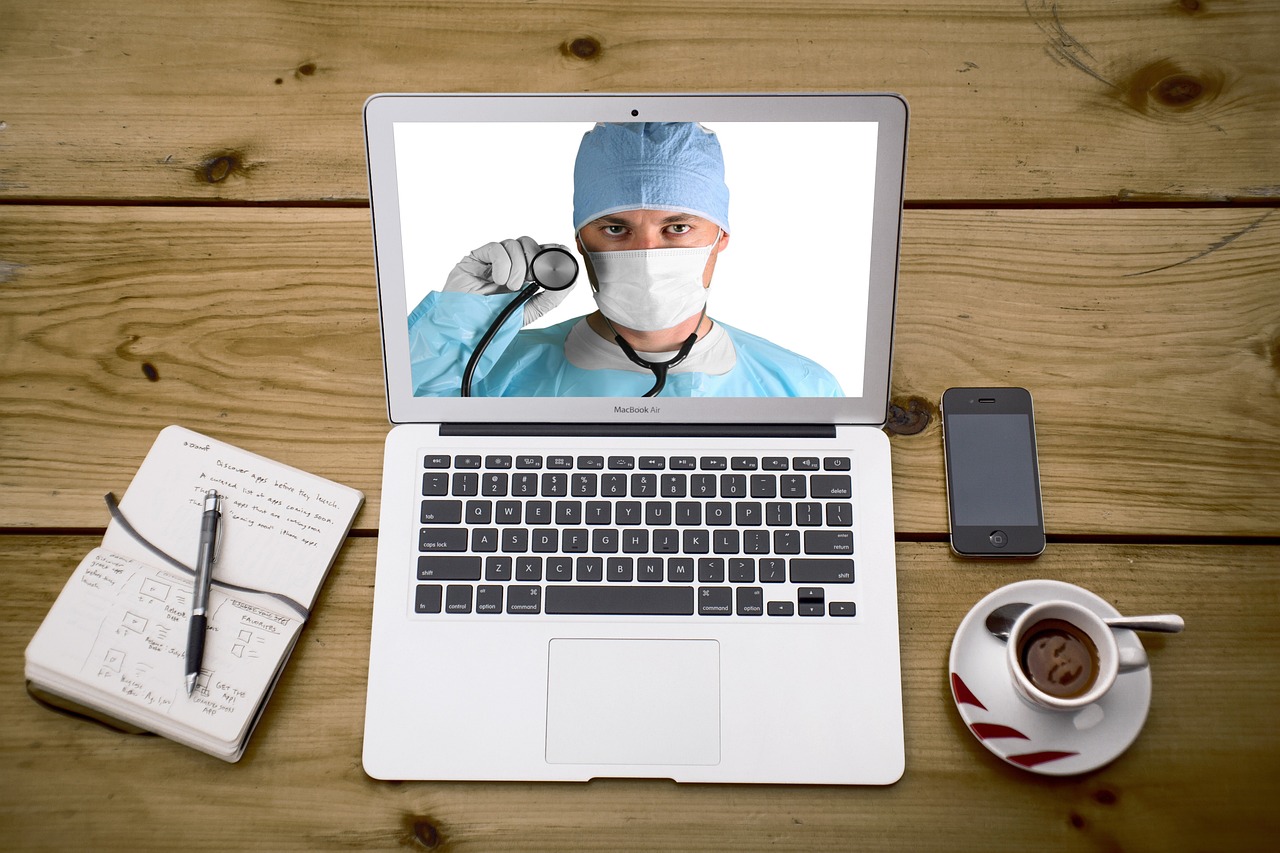
Telemedicine Revolution
In recent years, the has transformed the way we think about healthcare delivery. Imagine being able to consult with a doctor from the comfort of your home, without the hassle of traffic or waiting rooms. This is not just a dream—it's a reality that is reshaping global health initiatives. Telemedicine has emerged as a vital tool, particularly in underserved areas where access to medical facilities is limited. With just a smartphone or computer, patients can connect with healthcare providers, receive diagnoses, and even get prescriptions, all while maintaining a level of convenience that traditional healthcare models often lack.
But what exactly makes telemedicine so revolutionary? For starters, it drastically improves accessibility. Rural communities, for example, often struggle with a shortage of healthcare professionals. Telemedicine bridges this gap by allowing patients to reach specialists who may be hundreds of miles away. This not only saves time but also ensures that individuals receive timely medical attention, which can be crucial in emergencies. Furthermore, the COVID-19 pandemic has accelerated the adoption of telemedicine, highlighting its effectiveness in maintaining healthcare services while minimizing the risk of virus transmission.
Another significant aspect of telemedicine is its ability to provide personalized care. With advanced technology, healthcare providers can offer tailored treatment plans based on individual patient needs. This is particularly beneficial for managing chronic conditions such as diabetes or hypertension, where ongoing monitoring and adjustments are necessary. Through telehealth platforms, patients can regularly share their health metrics, enabling doctors to make informed decisions quickly.
Moreover, telemedicine is not just about video calls; it encompasses a wide range of services, including:
- Remote Patient Monitoring: Devices that track vital signs like heart rate and blood pressure can send data directly to healthcare providers, allowing for real-time updates and adjustments to treatment.
- Teletherapy: Mental health services have also embraced telemedicine, offering therapy sessions via video calls, which can reduce stigma and improve access to care.
- Follow-up Appointments: Patients can have follow-up consultations without the need for in-person visits, making it easier to manage ongoing health issues.
Despite its numerous benefits, telemedicine does come with challenges. Issues such as internet access and technological literacy can create barriers for certain populations. However, as technology continues to evolve and become more accessible, these challenges are likely to diminish. Additionally, regulatory frameworks are adapting to accommodate telemedicine, ensuring that it is a safe and effective option for patients worldwide.
In conclusion, the telemedicine revolution is not just a trend; it is a fundamental shift in how we approach healthcare. By enhancing accessibility, personalizing care, and leveraging technology, telemedicine stands to improve health outcomes globally. As we continue to embrace this innovative approach, we can look forward to a future where quality healthcare is available to everyone, regardless of their location.

Wearable Health Devices
In today's fast-paced world, are becoming more than just a trend; they are transforming the way we approach health and wellness. Imagine having a personal health assistant right on your wrist, constantly monitoring your vitals, tracking your activity levels, and even reminding you to take a deep breath when stress levels rise. These devices, ranging from fitness trackers to smartwatches, empower individuals to take charge of their health like never before.
One of the most significant advantages of wearable health devices is their ability to promote proactive health management. Instead of waiting for a yearly check-up or feeling unwell before seeking medical advice, users can now monitor key health metrics such as heart rate, sleep patterns, and physical activity in real-time. This constant feedback loop encourages individuals to make healthier lifestyle choices, whether it’s getting up to walk more during the day or recognizing when they need to rest.
But the benefits don’t stop there. Wearable devices also play a crucial role in the early detection of potential health issues. For instance, a sudden spike in heart rate or irregular sleep patterns can trigger alerts, prompting users to seek medical advice before a minor issue escalates into a more serious condition. This capability is particularly valuable for individuals with chronic health issues, as it allows for timely interventions that can significantly improve health outcomes.
Moreover, the integration of wearable technology with mobile health applications enhances the user experience. These apps not only provide a platform for users to view their data but also offer personalized insights and recommendations. For example, a fitness tracker synced with a mobile app can analyze activity data and suggest tailored workouts or dietary adjustments based on individual goals. This level of customization makes it easier for users to stay engaged in their health journey.
As we look to the future, the potential of wearable health devices continues to expand. With advancements in technology, we can expect to see even more sophisticated features, such as:
- Advanced Sensors: New sensors will enhance the accuracy of health metrics, providing deeper insights into various health conditions.
- Integration with Telehealth: Wearables will increasingly connect with telemedicine platforms, allowing healthcare providers to monitor patients remotely.
- AI and Machine Learning: These technologies will enable wearables to learn from user behavior and provide smarter health recommendations.
In summary, wearable health devices are not just gadgets; they represent a significant leap forward in personal healthcare. By empowering individuals to monitor their health actively and make informed decisions, these devices contribute to a healthier society overall. As technology continues to evolve, we can expect wearable devices to become an integral part of our daily lives, making health management more accessible and effective for everyone.
Q: What types of metrics can wearable health devices track?
A: Wearable health devices can track various metrics, including heart rate, steps taken, calories burned, sleep quality, and even blood oxygen levels, depending on the device.
Q: Are wearable health devices suitable for everyone?
A: Yes, wearable health devices can benefit a wide range of individuals, from fitness enthusiasts to those managing chronic health conditions. However, it's essential to choose a device that aligns with specific health goals.
Q: How do wearable health devices improve patient outcomes?
A: By providing real-time data and insights, wearable health devices enable early detection of health issues, promote proactive health management, and facilitate better communication between patients and healthcare providers.

Data Analytics in Health
In the ever-evolving landscape of healthcare, data analytics is emerging as a game-changer, transforming how we approach patient care and health management. Imagine having the ability to sift through mountains of data to uncover hidden patterns and insights that can save lives. That's precisely what data analytics does—it takes vast amounts of health data and distills it into actionable information. This capability is not just a luxury; it's becoming a necessity for healthcare providers aiming to deliver personalized treatment plans and improve patient outcomes.
The integration of data analytics in health allows for better decision-making by utilizing historical and real-time data. For instance, healthcare professionals can analyze patient records to identify trends in diseases, which can lead to early interventions. This is particularly crucial in managing chronic conditions such as diabetes or heart disease, where timely responses can significantly alter the course of treatment. With effective data analytics, healthcare providers can not only predict potential health issues but also allocate resources more efficiently, ensuring that patients receive the right care at the right time.
One of the most exciting aspects of data analytics is its role in predictive modeling. By analyzing historical health data, predictive models can forecast disease outbreaks or patient deterioration. This foresight enhances public health preparedness, allowing authorities to mobilize resources and implement preventive measures before a crisis escalates. For example, during flu season, predictive analytics can help hospitals prepare for an influx of patients by analyzing previous years' data on flu cases and hospital admissions.
Moreover, real-time monitoring powered by data analytics allows healthcare providers to keep a close eye on patients' conditions. Imagine a patient with a heart condition being monitored continuously through wearable technology. If any irregularities are detected, healthcare providers are alerted immediately, enabling prompt interventions. This kind of monitoring not only enhances patient safety but also improves the management of chronic diseases, leading to better health outcomes and reduced hospitalizations.
To illustrate the impact of data analytics in healthcare, consider the following table that summarizes its key benefits:
| Benefit | Description |
|---|---|
| Improved Decision-Making | Data-driven insights help healthcare providers make informed choices regarding patient care. |
| Resource Allocation | Efficient use of resources based on predictive analytics ensures that patients receive timely care. |
| Disease Prediction | Predictive modeling allows for early identification of potential health crises. |
| Enhanced Patient Monitoring | Real-time data tracking leads to timely interventions and better management of chronic conditions. |
In conclusion, data analytics is not just a technological advancement; it's a fundamental shift in how we approach healthcare. By harnessing the power of data, healthcare providers can enhance patient care, improve outcomes, and ultimately save lives. As we continue to embrace this digital transformation, the future of healthcare looks not only brighter but also more efficient and patient-centered.
- What is data analytics in healthcare? Data analytics in healthcare involves analyzing health data to gain insights that can improve patient care and operational efficiency.
- How does predictive modeling work? Predictive modeling uses historical data to forecast future health trends or patient outcomes, helping healthcare providers prepare for potential issues.
- What are the benefits of real-time monitoring? Real-time monitoring allows healthcare providers to track patient conditions continuously, leading to timely interventions and better management of chronic diseases.
- Can data analytics reduce healthcare costs? Yes, by improving resource allocation and patient management, data analytics can help reduce unnecessary hospitalizations and overall healthcare costs.

Predictive Modeling
Predictive modeling is a groundbreaking approach that leverages historical health data to forecast future events, making it a game-changer in public health. Imagine having a crystal ball that not only shows us what might happen but also helps us prepare for it. This technology uses sophisticated algorithms to analyze trends and patterns, allowing healthcare professionals to anticipate potential disease outbreaks and health crises before they escalate.
One of the most significant advantages of predictive modeling is its ability to enhance preparedness and response strategies. For instance, during the flu season, data from previous years can help predict spikes in cases, enabling hospitals and clinics to allocate resources more effectively. This proactive approach can save lives by ensuring that medical facilities are ready to handle increased patient loads.
Moreover, predictive modeling can be instrumental in chronic disease management. By analyzing patient data, healthcare providers can identify individuals at high risk for conditions like diabetes or heart disease. This early identification allows for targeted interventions, such as lifestyle modifications or medication adjustments, potentially preventing the onset of these diseases altogether.
To illustrate the impact of predictive modeling, consider the following table that highlights its applications:
| Application | Description | Benefits |
|---|---|---|
| Outbreak Prediction | Forecasting disease outbreaks based on historical data. | Improved resource allocation and timely interventions. |
| Chronic Disease Management | Identifying at-risk patients for early intervention. | Prevention of disease progression and improved patient outcomes. |
| Healthcare Resource Management | Optimizing staff and equipment based on predicted patient volumes. | Enhanced efficiency and reduced wait times. |
In summary, predictive modeling is not just a technological advancement; it’s a vital tool that empowers healthcare providers to act before issues arise. By harnessing the power of data, we can create a healthier future, one prediction at a time.
- What is predictive modeling in healthcare? Predictive modeling in healthcare involves using historical data to forecast future health events, enabling proactive interventions and better resource management.
- How does predictive modeling improve patient care? By identifying at-risk patients and predicting outbreaks, predictive modeling allows healthcare providers to implement timely and targeted interventions, ultimately enhancing patient outcomes.
- What types of data are used in predictive modeling? Various types of data, including patient demographics, medical history, and environmental factors, are analyzed to identify trends and make predictions.

Real-time Monitoring
In today's fast-paced world, has become a game-changer in the healthcare landscape. Imagine a scenario where healthcare providers have the ability to keep an eye on patients' health metrics continuously, like a hawk watching over its nest. This capability not only enhances patient care but also allows for timely interventions that can be crucial in managing chronic diseases. For instance, patients with conditions such as diabetes or heart disease can benefit immensely from continuous tracking of their vital signs. By utilizing connected devices, healthcare professionals can receive instant updates and alerts, enabling them to act swiftly if any concerning trends emerge.
Moreover, real-time monitoring fosters a more proactive approach to health management. Instead of waiting for a scheduled appointment or a crisis to occur, healthcare providers can intervene early, potentially preventing complications before they escalate. This shift from reactive to proactive care is akin to catching a small leak in a roof before it turns into a major flood. The integration of wearable technology, such as smartwatches and fitness trackers, plays a significant role in this transformation. These devices not only empower patients to take charge of their own health but also create a wealth of data that can be analyzed for better health outcomes.
To illustrate the impact of real-time monitoring, consider the following table that outlines the benefits and applications:
| Benefit | Application |
|---|---|
| Early Intervention | Alerts for abnormal readings, allowing immediate medical response. |
| Improved Patient Engagement | Patients receive feedback on their health in real-time, encouraging proactive behaviors. |
| Data-Driven Decisions | Healthcare providers can make informed decisions based on real-time data analytics. |
| Cost Efficiency | Reduces hospital readmissions and emergency visits through continuous monitoring. |
As we look to the future, the potential for real-time monitoring in healthcare is immense. With advancements in technology, we can expect even more sophisticated systems that will not only enhance the quality of care but also improve the overall patient experience. The integration of artificial intelligence and machine learning into these monitoring systems will further refine the accuracy of health assessments and predictions. This evolution is not just about keeping patients alive; it's about ensuring they thrive in their health journeys.
- What is real-time monitoring in healthcare?
Real-time monitoring involves continuously tracking a patient's health metrics using technology, allowing for immediate responses to any concerning changes. - How does real-time monitoring benefit patients?
It enables early intervention, enhances patient engagement, and improves overall health outcomes through timely data-driven decisions. - What technologies are used for real-time monitoring?
Wearable devices, mobile health applications, and connected medical equipment are commonly used for real-time health monitoring. - Can real-time monitoring reduce healthcare costs?
Yes, by preventing complications and reducing hospital readmissions, real-time monitoring can lead to significant cost savings in healthcare.

Mobile Health Applications
In today's fast-paced world, have become an essential part of our daily lives, transforming the way we manage our health. These apps are more than just a trend; they are a lifeline for many, providing a direct link to healthcare resources and enabling users to take charge of their well-being. Imagine having a personal healthcare assistant right in your pocket, ready to help you navigate your health journey at any moment. Sounds amazing, right? Well, that's precisely what these applications offer.
Mobile health apps serve a multitude of purposes, from tracking fitness goals to reminding patients about medication schedules. They empower individuals to monitor their health metrics actively, leading to more informed decisions about their lifestyles. For instance, a fitness app can track your daily steps, heart rate, and even sleep patterns, giving you a comprehensive view of your health. This data is not just numbers; it’s a reflection of your habits and can motivate you to make positive changes. It's like having a coach who cheers you on while also holding you accountable!
Additionally, many of these apps include features that facilitate patient engagement through various interactive tools. Users can access educational resources, participate in community forums, and even schedule appointments with healthcare providers—all from the convenience of their smartphones. This level of accessibility is particularly crucial for individuals in remote or underserved areas, where healthcare facilities may be limited. With just a few taps, they can connect with healthcare professionals, receive advice, and ensure that they are adhering to treatment protocols.
Furthermore, mobile health applications offer the ability to set personalized reminders. Whether it's taking medication on time or attending a follow-up appointment, these reminders help improve adherence to treatment plans. According to studies, patients who use such apps are significantly more likely to stick to their prescribed regimens. This is crucial because it can lead to better health outcomes and a reduction in hospital visits, ultimately easing the burden on healthcare systems.
To illustrate the impact of mobile health applications, consider the following table that highlights some popular apps and their key features:
| App Name | Key Features | Target Audience |
|---|---|---|
| MyFitnessPal | Calorie tracking, exercise log, community support | Individuals looking to manage weight |
| HealthTap | Virtual consultations, symptom checker, health articles | Patients seeking online medical advice |
| Medisafe | Medication reminders, refill alerts, progress tracking | Patients with chronic conditions |
In conclusion, mobile health applications are revolutionizing the way we approach healthcare. They not only enhance individual health management but also foster a sense of community among users. By leveraging technology, these apps are bridging the gap between patients and healthcare providers, ensuring that everyone has access to the resources they need. So, if you haven’t already, it’s time to explore the world of mobile health applications and see how they can benefit you on your health journey!
- What are mobile health applications?
Mobile health applications are software programs designed to help users manage their health and wellness through their smartphones or tablets.
- How can mobile health apps improve patient engagement?
These apps provide easy access to health information, reminders for medications, and the ability to communicate directly with healthcare providers, which enhances overall patient engagement.
- Are mobile health applications secure?
Most reputable mobile health apps implement strong security measures to protect user data, but it's essential to review privacy policies and user reviews before downloading.
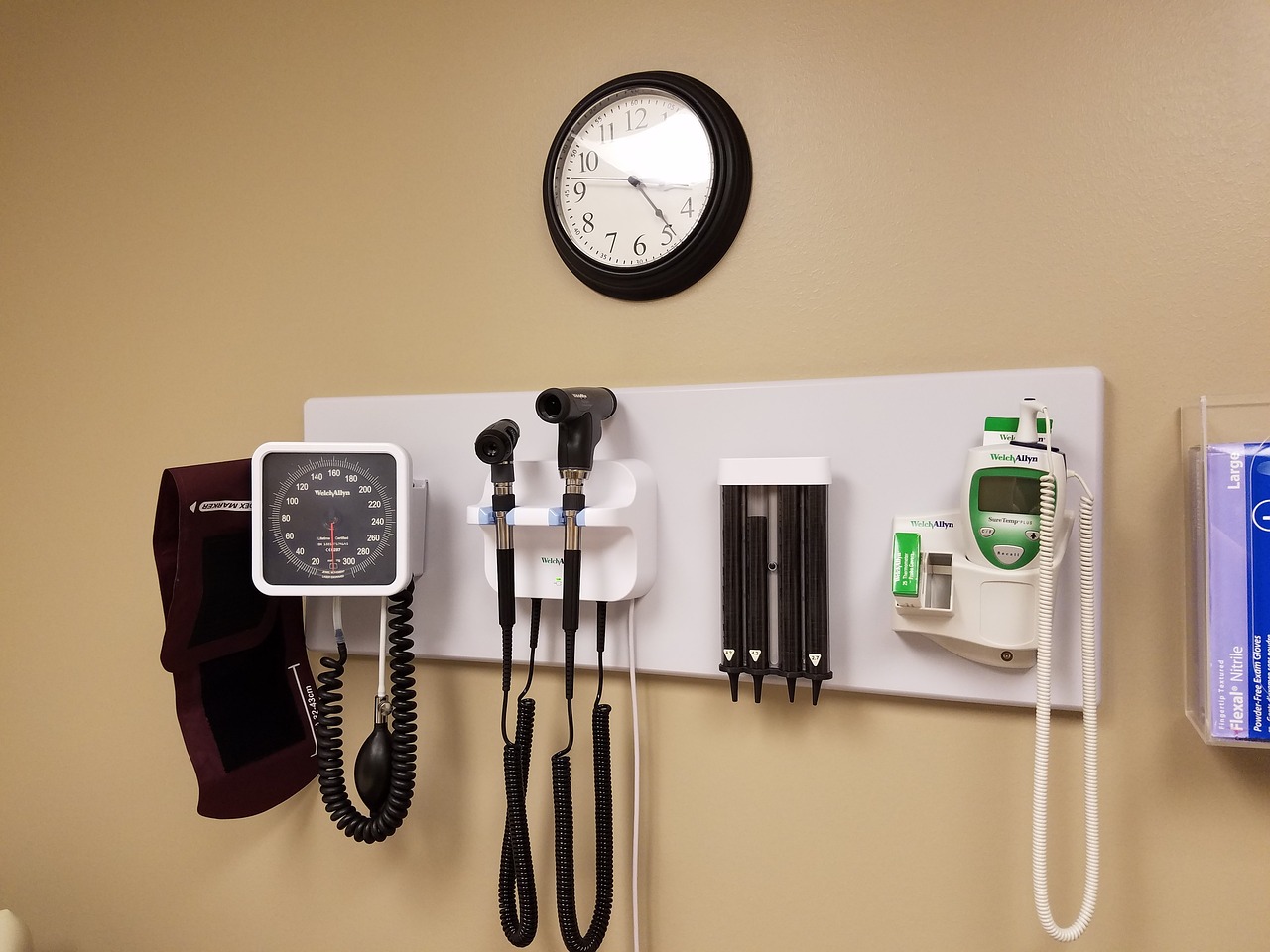
Blockchain in Healthcare
Blockchain technology is making waves in the healthcare sector, acting as a digital backbone that enhances the security and efficiency of medical records and patient data management. Imagine a world where your health information isn’t just stored in a single hospital’s database but is securely shared across various platforms, all while maintaining your privacy. This is the promise of blockchain. By utilizing a decentralized ledger, healthcare providers can ensure that patient data is not only secure but also easily accessible to authorized users, which can significantly enhance the quality of care.
One of the most compelling advantages of blockchain in healthcare is its ability to enhance data security and privacy. Traditional healthcare systems often face challenges related to data breaches, leading to unauthorized access to sensitive patient information. With blockchain, each transaction is encrypted and linked to the previous one, creating an immutable chain of records. This means that once data is entered, it cannot be altered without the consensus of all parties involved. Patients can have peace of mind knowing that their information is well-protected, and they have greater control over who accesses their data.
In addition to security, blockchain also streamlines supply chain management in the healthcare industry. The traceability of pharmaceuticals is crucial, especially in combating counterfeit drugs that can endanger lives. By recording every transaction along the supply chain on a blockchain, healthcare providers can track the origin and journey of medications, ensuring their authenticity. This level of transparency not only builds trust among patients and providers but also significantly reduces the risk of fraud and errors in medication distribution.
To illustrate the impact of blockchain in healthcare, consider the following table that highlights some key benefits:
| Benefit | Description |
|---|---|
| Improved Security | Data is encrypted and stored in a decentralized manner, reducing the risk of breaches. |
| Enhanced Transparency | All transactions are recorded on a public ledger, allowing for greater accountability. |
| Streamlined Processes | Automated smart contracts can expedite administrative processes like billing and claims. |
| Patient Empowerment | Patients can control access to their data, fostering trust and engagement in their care. |
As we look toward the future, the integration of blockchain in healthcare appears to be a game-changer. It’s not just about securing data; it’s about creating a more efficient, transparent, and patient-centered healthcare system. By harnessing the power of blockchain, we can ensure that healthcare is not only innovative but also accessible and trustworthy for everyone.
- What is blockchain technology? Blockchain is a decentralized digital ledger that securely records transactions across multiple computers.
- How does blockchain improve healthcare? It enhances data security, ensures transparency in supply chains, and empowers patients by giving them control over their data.
- Are there any challenges to implementing blockchain in healthcare? Yes, challenges include integration with existing systems, regulatory compliance, and the need for widespread adoption among healthcare providers.
- Can patients access their health records through blockchain? Absolutely! Blockchain enables patients to manage and share their health records securely with authorized providers.
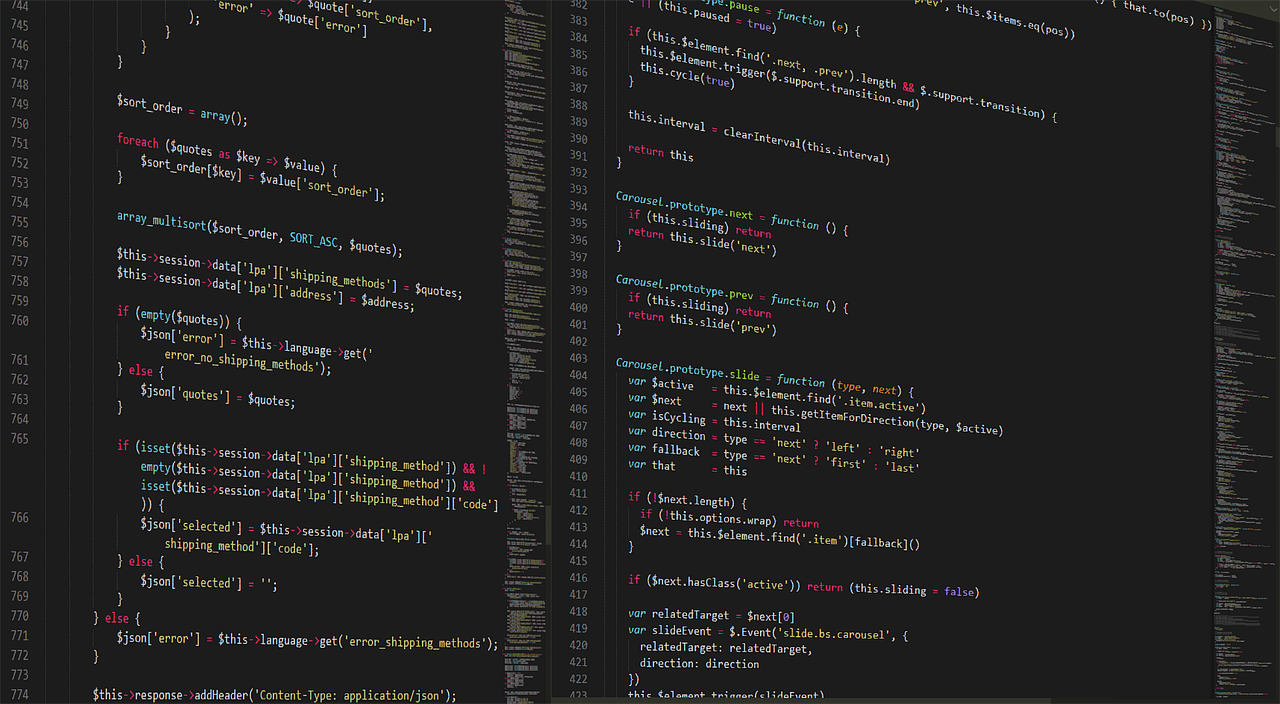
Data Security and Privacy
In today's digital age, where data breaches and cyber threats are becoming alarmingly common, in healthcare have never been more crucial. With the integration of blockchain technology, healthcare systems are taking significant strides to protect sensitive patient information. Imagine a fortress built to safeguard your most valuable treasures; that's what blockchain does for your health data. It creates a decentralized and tamper-proof ledger that ensures only authorized personnel can access patient records.
One of the standout features of blockchain is its ability to empower patients. By implementing blockchain solutions, individuals gain more control over their own data. They can decide who accesses their information, when, and for what purpose. This level of control not only enhances patient trust but also encourages them to engage more actively in their healthcare journey. After all, wouldn’t you feel more secure knowing that you have a say in who sees your medical history?
Moreover, the use of blockchain technology helps to mitigate the risk of data breaches. Traditional healthcare systems often rely on centralized databases that are prime targets for hackers. In contrast, blockchain's decentralized nature means that even if one node is compromised, the rest of the network remains secure. This multi-layered security approach drastically reduces the likelihood of unauthorized access to sensitive health information.
To illustrate the impact of blockchain on data security, consider the following table:
| Traditional Systems | Blockchain Systems |
|---|---|
| Centralized data storage | Decentralized data storage |
| Higher risk of data breaches | Lower risk of data breaches |
| Limited patient control over data | Enhanced patient control over data |
| Manual data sharing processes | Automated and secure data sharing |
Furthermore, the transparency provided by blockchain technology ensures that all transactions are recorded and can be audited. This means that healthcare providers can easily track who accessed patient data and for what reason, fostering an environment of accountability. In a world where trust is paramount, this transparency can be a game-changer.
In conclusion, the integration of blockchain technology into healthcare not only enhances data security and privacy but also empowers patients, fosters trust, and promotes a more efficient healthcare system. As we continue to embrace technological advancements, it's essential that we prioritize the protection of sensitive health information, ensuring that patients can confidently navigate their healthcare journeys.
- What is blockchain technology? Blockchain is a decentralized digital ledger that records transactions across many computers securely, making it nearly impossible to alter or hack the data.
- How does blockchain improve data security in healthcare? By decentralizing data storage, it reduces the risk of breaches and gives patients control over their own information.
- Can patients access their health data through blockchain? Yes, blockchain technology allows patients to have more control and access to their health information.
- What are the benefits of using blockchain in healthcare? Benefits include enhanced data security, patient empowerment, improved transparency, and streamlined data sharing.

Supply Chain Management
In the ever-evolving landscape of healthcare, effective supply chain management is crucial for ensuring that medical products are delivered safely and efficiently. With the integration of blockchain technology, healthcare systems are witnessing a significant transformation in how they manage their supply chains. Imagine a world where every step of a product's journey—from manufacturer to patient—is transparent and secure. This is becoming a reality, thanks to blockchain.
Blockchain offers a decentralized ledger that records every transaction in real-time. This means that all parties involved, from manufacturers to healthcare providers, can access up-to-date information about the status and location of medical supplies. By enhancing the traceability of pharmaceuticals, blockchain minimizes the risk of counterfeit drugs entering the market. This is not just a theoretical improvement; it’s a lifesaving advancement that ensures patients receive the correct medications.
Consider the following key benefits of blockchain in supply chain management:
- Increased Transparency: Stakeholders can track the journey of products, ensuring they are sourced ethically and handled properly.
- Enhanced Security: The immutable nature of blockchain records protects against tampering and fraud.
- Streamlined Processes: Automated processes reduce delays and improve the efficiency of product recalls and inventory management.
Furthermore, the implementation of this technology can lead to significant cost savings. By reducing the incidence of counterfeit drugs and improving inventory management, healthcare organizations can allocate their resources more effectively. This allows them to focus on what truly matters: patient care.
As healthcare continues to embrace digital solutions, the role of blockchain in supply chain management will only grow. It represents a paradigm shift, where trust and efficiency are at the forefront of healthcare delivery. In a world where every second counts, especially in emergencies, having a reliable supply chain can make all the difference.
- What is blockchain technology? Blockchain is a decentralized digital ledger that records transactions across many computers securely and transparently.
- How does blockchain improve supply chain management? It enhances traceability, security, and efficiency by providing real-time visibility into the movement of products.
- Can blockchain prevent counterfeit drugs? Yes, by ensuring that every transaction is recorded and verifiable, blockchain significantly reduces the risk of counterfeit drugs entering the supply chain.
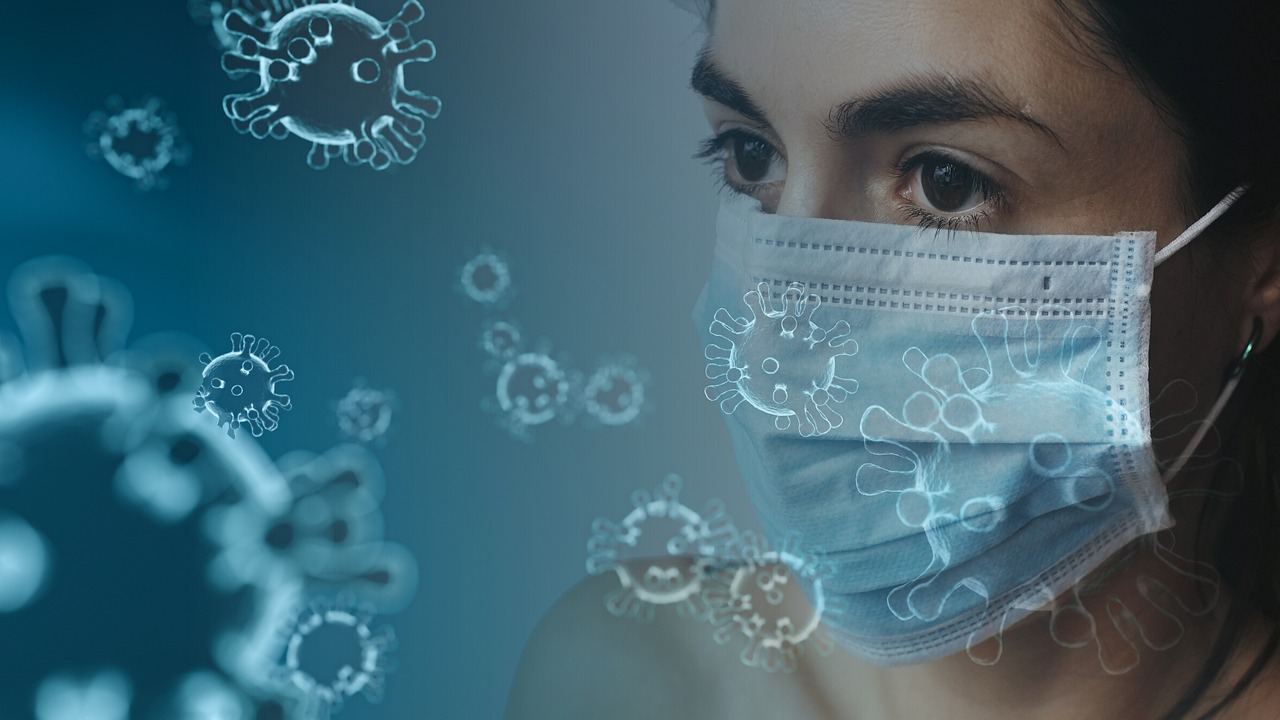
Artificial Intelligence in Diagnostics
In recent years, Artificial Intelligence (AI) has emerged as a game-changer in the field of diagnostics, fundamentally altering how healthcare professionals approach patient care. Imagine having a tool that can sift through thousands of medical images or data points in the blink of an eye, identifying potential issues that a human might miss. This is the power of AI, and it’s transforming the landscape of healthcare diagnostics.
One of the most significant advancements in AI technology is its ability to analyze medical images with remarkable accuracy. For instance, AI algorithms can evaluate X-rays, MRIs, and CT scans, pinpointing abnormalities such as tumors or fractures. This not only speeds up the diagnostic process but also enhances the accuracy of results. Traditional methods often rely on the expertise of radiologists, who may be limited by time or fatigue. With AI, we can ensure that every image is analyzed thoroughly and consistently, leading to better patient outcomes.
Moreover, AI is not just about image recognition; it’s also about data analysis. Machine learning algorithms can process vast amounts of patient data, identifying patterns that may indicate disease progression or potential health risks. By analyzing historical data, these algorithms can help predict outcomes and tailor treatment plans to individual patients. For example, if a patient has a history of heart disease, AI can assess their current health metrics and suggest proactive measures to mitigate risks. This personalized approach is a significant leap forward in patient care.
Machine learning, a subset of AI, employs algorithms that learn from data and improve over time. These algorithms can identify trends and correlations within large datasets, which is invaluable in diagnostics. For instance, they can analyze genetic information alongside lifestyle factors to predict the likelihood of developing certain conditions. This capability not only aids in early detection but also empowers healthcare providers to make informed decisions about treatment options.
Furthermore, the integration of AI in diagnostics can lead to significant cost savings for healthcare systems. By reducing the time spent on manual analyses and minimizing the risk of misdiagnosis, healthcare providers can allocate resources more efficiently. This efficiency translates into better care for patients, as healthcare professionals can focus on what they do best: treating and caring for individuals.
Another fascinating application of AI in diagnostics is the use of AI-powered chatbots. These virtual assistants can engage with patients, answering their questions and triaging symptoms. Imagine having a 24/7 healthcare assistant that can provide immediate responses to your inquiries! Chatbots can guide individuals to appropriate care based on their symptoms, making it easier for patients to navigate the healthcare system. This not only alleviates the burden on healthcare professionals but also ensures that patients receive timely advice and support.
As we look to the future, the potential for AI in diagnostics is boundless. With ongoing advancements in technology and data analytics, we can expect even more innovative solutions that enhance the quality of care. However, it is essential to remember that while AI can augment the capabilities of healthcare professionals, it should not replace the human touch that is so crucial in medicine. The ideal scenario is a partnership between AI and healthcare providers, where technology supports and enhances human expertise.
- What role does AI play in diagnostics? AI assists in analyzing medical images and patient data, improving accuracy and speed in diagnoses.
- Can AI replace doctors? No, AI is designed to support healthcare professionals, not replace them. It enhances their capabilities and aids in decision-making.
- How does AI improve patient outcomes? By providing accurate and timely diagnoses, AI helps in early detection and personalized treatment, leading to better health outcomes.
- Are AI-powered chatbots reliable? Yes, they can provide valuable information and direct patients to appropriate care, but they should not replace professional medical advice.

Machine Learning Algorithms
Machine learning algorithms are at the forefront of a healthcare revolution, acting like the brain behind the scenes, tirelessly sifting through mountains of medical data to uncover hidden patterns. Imagine having a super-intelligent assistant that can analyze thousands of patient records in the blink of an eye, spotting trends and anomalies that even the most seasoned doctors might overlook. This technology is not just a trend; it's a game changer in diagnostics. By leveraging historical data, machine learning can predict outcomes with remarkable accuracy, making it an invaluable tool for healthcare professionals.
For instance, consider a scenario where a hospital is trying to predict which patients are at risk of developing complications post-surgery. Machine learning algorithms can analyze various data points, such as age, medical history, and even lifestyle choices, to identify patients who may need closer monitoring. This proactive approach can significantly enhance patient care, as it allows healthcare providers to intervene before problems escalate.
Moreover, these algorithms are continually learning and evolving. As more data becomes available, they refine their predictions, much like how a student improves their grades with more study and practice. This adaptability is crucial in a field where new diseases and treatment methods emerge regularly. The algorithms can adjust to new information, ensuring that healthcare providers are equipped with the most current insights.
One of the most exciting applications of machine learning in healthcare is in the field of imaging. Algorithms can analyze medical images—like X-rays, MRIs, and CT scans—faster and sometimes more accurately than human radiologists. They can detect early signs of diseases such as cancer, often before symptoms even appear. This early detection can lead to timely interventions, ultimately saving lives.
To illustrate the impact of machine learning algorithms in diagnostics, consider the following table:
| Application | Description | Benefits |
|---|---|---|
| Predictive Analytics | Analyzes patient data to foresee potential health issues. | Early intervention and personalized care. |
| Image Recognition | Identifies anomalies in medical imaging. | Increased diagnostic accuracy and speed. |
| Outcome Prediction | Forecasts patient recovery or complication likelihood. | Better resource allocation and patient management. |
As we delve deeper into the realm of machine learning, it's essential to acknowledge the ethical considerations that come with it. While these algorithms offer incredible advantages, they also raise questions about bias in data and the importance of transparency in decision-making. Ensuring that machine learning systems are trained on diverse datasets can help mitigate these biases, leading to fairer and more equitable healthcare solutions.
In conclusion, machine learning algorithms are not just a technological marvel; they are a vital component in the future of healthcare. By harnessing the power of data, they empower healthcare professionals to make informed decisions, ultimately leading to better patient outcomes. As we continue to innovate and refine these technologies, the potential for improved health diagnostics and personalized care is virtually limitless.
- What are machine learning algorithms? Machine learning algorithms are computational models that learn from data to make predictions or decisions without being explicitly programmed.
- How do these algorithms improve healthcare? They enhance diagnostics, predict patient outcomes, and enable personalized treatment plans by analyzing vast amounts of medical data.
- Are there any risks associated with using machine learning in healthcare? Yes, potential risks include data privacy concerns and bias in algorithms, which can affect the fairness of healthcare delivery.

AI-powered Chatbots
In today's fast-paced world, where every second counts, are emerging as a game-changer in the healthcare landscape. Imagine having a virtual assistant that never sleeps, always ready to answer your health-related questions at any hour of the day. These intelligent bots are designed to provide immediate responses to patient inquiries, making healthcare more accessible than ever before. They can triage symptoms, offer preliminary advice, and guide individuals to the appropriate care, all while reducing the overwhelming burden on healthcare systems.
But how exactly do these chatbots work? Utilizing advanced natural language processing (NLP) and machine learning algorithms, AI chatbots can understand and interpret human language, allowing them to engage in meaningful conversations with users. This technology enables them to analyze the information provided by patients and respond with tailored recommendations. For instance, if a user describes symptoms that suggest a cold, the chatbot might respond with advice on home care and suggest scheduling an appointment if symptoms worsen. This not only helps patients feel heard and understood but also ensures they receive timely guidance.
Moreover, AI chatbots can significantly enhance the efficiency of healthcare providers. By handling routine inquiries, they free up valuable time for medical professionals, allowing them to focus on more complex cases. Consider the following benefits:
- 24/7 Availability: Unlike human staff, chatbots are always available, providing instant support at any time.
- Cost-Effective: Reducing the need for extensive customer service teams can lead to significant cost savings for healthcare facilities.
- Scalability: Chatbots can handle thousands of inquiries simultaneously, making them ideal for managing patient flow during peak times.
As the adoption of AI chatbots continues to grow, they are becoming an integral part of the healthcare ecosystem. Not only do they enhance patient engagement, but they also contribute to better health outcomes by ensuring that individuals receive timely and relevant information. In the future, we can expect these chatbots to become even more sophisticated, integrating with electronic health records (EHR) and other healthcare technologies to provide a seamless experience for both patients and providers.
Q1: How do AI chatbots ensure patient privacy?
AI chatbots are designed with strict privacy protocols in place. They encrypt data and comply with regulations such as HIPAA to protect sensitive patient information.
Q2: Can chatbots replace human healthcare providers?
While chatbots can handle many routine inquiries and provide preliminary advice, they are not a replacement for human healthcare providers. They serve as a supportive tool to enhance patient care.
Q3: How accurate are AI chatbots in diagnosing health issues?
AI chatbots can provide general advice based on symptoms, but they do not diagnose conditions. Their recommendations should always be followed up with a consultation from a qualified healthcare professional.
Frequently Asked Questions
- What is telemedicine and how does it benefit patients?
Telemedicine is a technology-driven approach that allows patients to consult with healthcare professionals remotely, using video calls or messaging. This is especially beneficial for individuals in rural or underserved areas, as it provides timely access to medical advice without the need for travel, saving time and resources.
- How do wearable health devices improve health management?
Wearable health devices, like fitness trackers and smartwatches, empower users to monitor their health metrics in real-time. By tracking activities, heart rates, and sleep patterns, individuals can take proactive steps towards better health, making informed decisions about their lifestyle and identifying potential health issues early on.
- What role does data analytics play in healthcare?
Data analytics in healthcare allows for enhanced decision-making by analyzing patient data to predict diseases and personalize treatment plans. This not only improves patient outcomes but also optimizes resource allocation, ensuring that healthcare providers can deliver the best possible care.
- How does predictive modeling enhance public health strategies?
Predictive modeling analyzes historical health data to identify trends and potential outbreaks, which is crucial for public health preparedness. By anticipating health crises, authorities can implement effective response strategies, potentially saving lives and resources.
- What are the benefits of mobile health applications?
Mobile health applications facilitate patient engagement by providing tools for self-management, such as appointment scheduling and medication reminders. These apps help individuals adhere to treatment protocols, ultimately leading to better health outcomes.
- How does blockchain technology enhance data security in healthcare?
Blockchain technology secures patient data by creating a decentralized and immutable record of medical information. This empowers patients to control their data while ensuring that sensitive information is protected against breaches, fostering trust between patients and healthcare providers.
- What impact does AI have on diagnostics?
AI significantly improves diagnostics by analyzing medical images and data with high accuracy. This technology aids healthcare professionals in making quicker and more informed decisions, enhancing the overall quality of care provided to patients.
- How do AI-powered chatbots assist patients?
AI-powered chatbots provide immediate responses to patient inquiries, helping to triage symptoms and guide individuals to the appropriate level of care. This reduces the burden on healthcare systems by addressing common questions and concerns without the need for human intervention.




